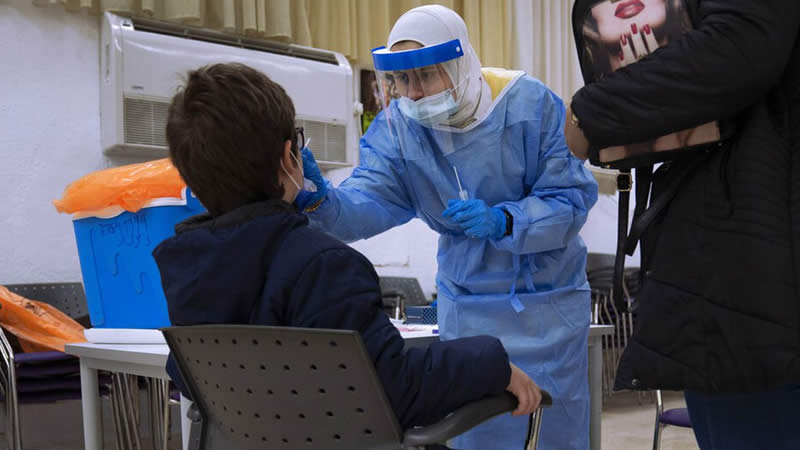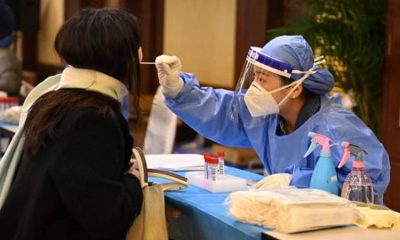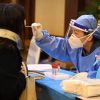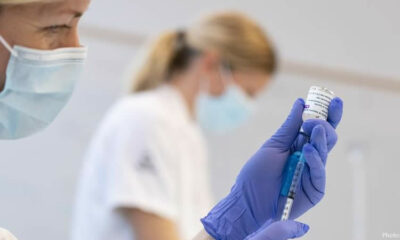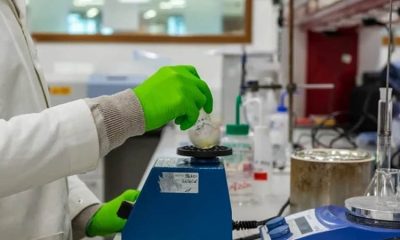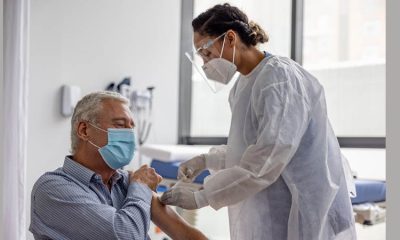Health
Children Highly Susceptible to the Omicron Variant of Covid-19: Experts
The onset of the Omicron wave in Singapore has resulted in an increase in Covid-19 infections among children.
But why is this only happening now?
According to infectious diseases expert Dale Fisher, one reason is that the Omicron variant is better able to resist children’s innate immune response, which protected them during earlier waves.
Unlike the Delta variant, which is more likely to infect the lungs, the Omicron variant affects the upper airways.
“These airways and nasal passages are smaller in children, making the risk of symptoms greater,” said Professor Fisher, a senior infectious diseases consultant at the National University Hospital (NUH).
“And this could turn into croup or asthma-type syndromes, due to the inflammation and mucous plugging.”
While more children are being hospitalized in several countries, including the United States, experts agree that infected children do not become severely ill.
According to one study conducted in the United States, children under the age of five who were infected with Omicron fared better than those who were infected with the Delta variant. These children had a 67% lower risk of being hospitalized and a 68% lower risk of being admitted to intensive care.
The study was published online ahead of peer review in late January, with the authors making predictions that Omicron’s greater transmissibility may still result in a higher overall number of children requiring hospital care than during the Delta wave.
Singapore reported 9,420 new Covid-19 cases on Sunday (Feb 13), the majority of whom were adults aged 20 and older.
However, 1,130 of the 1,130 were children under the age of 12. There are currently 56 children in this age group hospitalized, though none require intensive care or oxygen supplementation.
Last Tuesday, Health Minister Ong Ye Kung stated that children under the age of 12 have the highest infection rate of any age group in the country, at around 67 per 100,000 people.
Those aged 12 to 19 were the next most infected, with an infection rate of around 55 per 100,000 population.
Fortunately, hospitalization of children due to Covid-19 is often precautionary, with short stays of two to three days, according to Mr. Ong.
However, it is still critical to ensure that there are enough pediatric beds available, he added.
Singapore has two public hospitals capable of providing specialized medical care for children: NUH and KK Women’s and Children’s Hospital (KKH).
In response to questions from The Straits Times, both hospitals stated that they are working to increase capacity in expectation of an increase in pediatric cases.
Professor Lee Yung Seng, head of the Khoo Teck Puat-National University Children’s Medical Institute at NUH, stated that his hospital’s children’s emergency department is ready for a sudden surge.
It has beefed up manpower by redeploying staff and tapping employees from the medical institute. “The team is also taking on extra shifts internally to augment shortfalls where needed,” Prof Lee added.
The medical institute’s inpatient ward has increased its capacity to accommodate more young Covid-19 patients.
Associate Professor Chan Yoke Hwee, who chairs the medicine division at KKH, stated that her institution is collaborating with the Health Ministry to increase national capacity for pediatric patients.
“Plans are in place to accommodate increases inpatient cases if needed, and patients will be provided care in a timely manner as appropriate to their acute clinical needs,” she added. She noted that the hospital continues to have the
capacity to deliver a wide range of clinical services.
Bed spaces are being increased in community treatment facilities, which typically accept patients who require more supervision.
Raffles Medical Group, which operates such a facility at Singapore Expo, has announced the addition of 350 new beds.
This brings the total number of beds for patients young and old to more than 1,650.
A spokesman said that adjoining rooms are also available for families of up to five people.
As of February 4, more than 192,000 children aged five to eleven had already received their first dose of the Covid-19 vaccine.


